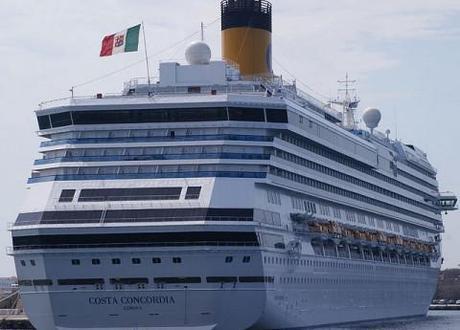
Disaster: Cruise ship Costa Concordia. Photo credit: Cyril F. http://flic.kr/p/6cbtES
The captain of the Costa Concordia cruise ship is being questioned on suspicion of manslaughter and abandoning ship. Six people died and a further fifteen are missing after the Italian ship collided with rocks off the coast of Giglio on Friday.
Survivors described the evacuation of the sinking ship as “pure chaos”, according to The Telegraph, with a shortage of life jackets and a crush to reach lifeboats. Much of the attention is focused on the behavior of Captain Francesco Schettino and his crew in the immediate aftermath: several eyewitnesses alleged that the captain abandoned ship with many passengers still on board, while others claimed crew members had pushed disabled and elderly passengers out of the way in a rush to escape.
The cause of the disaster remains unclear, but Italian prosecutors already seem confident the captain was to blame. According to some reports, Schettino was attempting to greet the inhabitants of the island of Giglio and steered the ship too close to the coastline.
Just like Titanic. “Have you seen Titanic? That’s exactly what it was like,” an American survivor told The Guardian, after she and her family crawled along corridors “that were nearly vertical” to escape the listing ship. Another passenger described incompetent evacuation procedures, reported the paper: “We had to scream at the controllers to release the boats from the side. We were standing in the corridors and they weren’t allowing us to get on to the boats.” Some passengers ended up jumping into the sea to escape.
The search continues for 15 people missing after the cruise ship disaster. Crew member Manrico Giampedroni was rescued from the ship two days after the Costa Concordia hit rocks, reported The Guardian.
Conflicting theories. There are three main theories as to the cause of the collision, wrote David Derbyshire in The Daily Mail: a rock formation that didn’t appear on nautical charts; electrical failure; and human error. The captain has claimed that an uncharted submerged rock was to blame, but Derbyshire said human error was the “prime suspect”: “It is the main cause of 80 per cent of shipping accidents and the crew may simply have become distracted or lost concentration early on in the voyage, allowing the vessel to drift to the coast.” However, Derbyshire said that the ship’s Electronic Chart Display Information System should have raised the alarm if the ship drifted off course. Meanwhile, the BBC reported that there have been claims in the Italian media that the captain “steered his vessel close to Giglio in order to put on a show for residents of the island”.
“It seems that the commander made errors of judgment that had serious consequences,” said Costa Crociere, operators of the Costa Concordia cruise ship, in a statement after the disaster, according to the BBC.
Size doesn’t matter. “What the world now sees is that ships costing the better part of a billion dollars can still be holed by a rock,” wrote Gwyn Topham in The Guardian, drawing parallels with the Titanic disaster. Topham quoted the communications director of maritime professionals union Nautilus as saying the design of large cruise ships is cause for concern: “We believe a lot of basic safety principles are being compromised to maximise the revenue,” said Andrew Linnington.
“I just thought my life was gone … I thought, if I don’t die from the swimming part, I’m going to die from the shock,” a survivor told The Independent.
An aberration. “I am convinced that this is a one-off incident – perhaps with human error a major contributing factor,” said Douglas Ward in The Telegraph. According to Ward, cruise ships are safer now than ever before, with stringent emergency procedures and technology in place. “Could more be done? Possibly, but safety concerns must be balanced against enjoyment: passengers take a cruise for a holiday, and to visit destinations in a leisurely manner,” argued Ward.
The sea is always dangerous. “Passengers have spoken of ‘chaotic’ evacuation procedures, but crew have equally remarked on panicky behavior and non-cooperation,” wrote Libby Purves in The Times (£), pointing out that any emergency evacuation was bound to feel chaotic as passengers were presumably not accustomed to “huge physical crises”. What’s more, Purves said that it was to the crew and rescuers’ credit that only 15 out of 4,234 people were still missing: “In historic terms, a century after Titanic, that is a pretty remarkable result.” Purves wrote that cruise ships may feel comfortable, but the fact remains that any nautical journey carries risk: “However luxuriously and soothingly we disguise it from ourselves, the ocean remains as unforgiving as it was in 1912.”
See below for amateur footage of the Costa Concordia evacuation.

